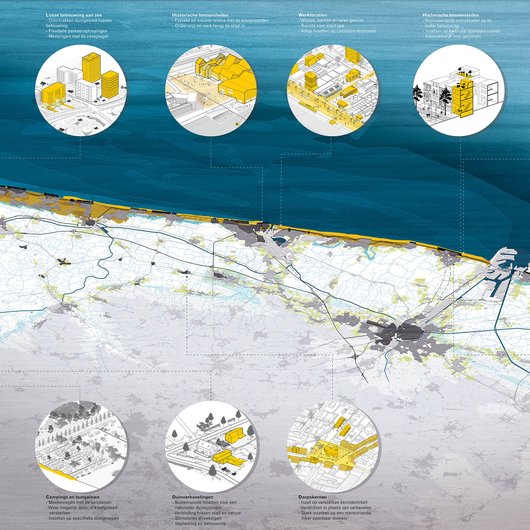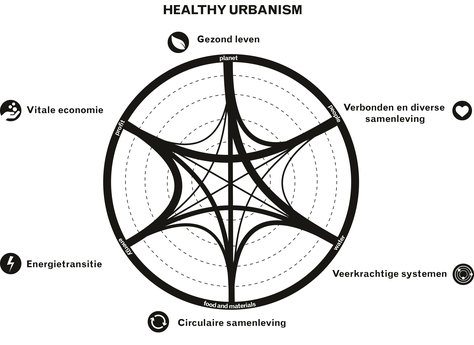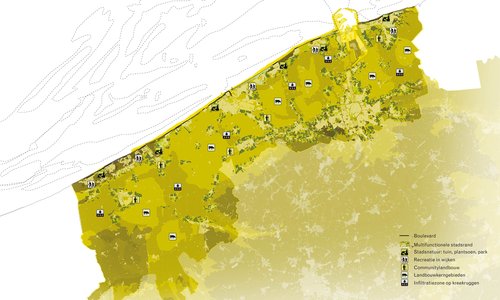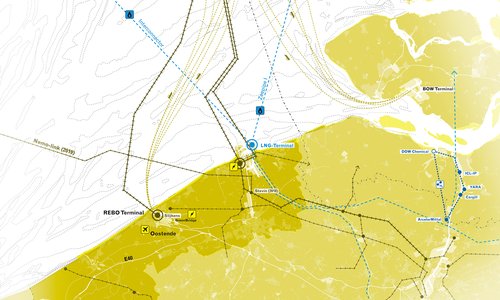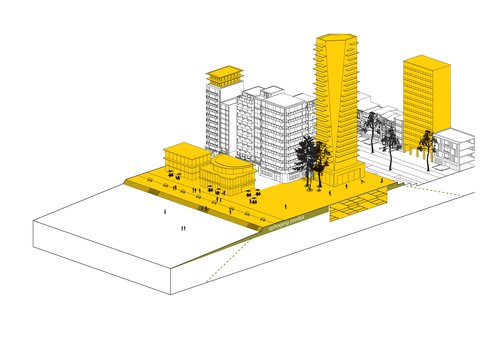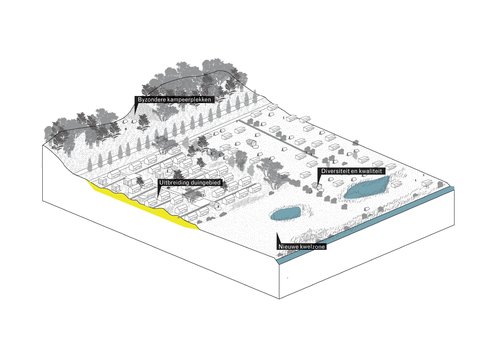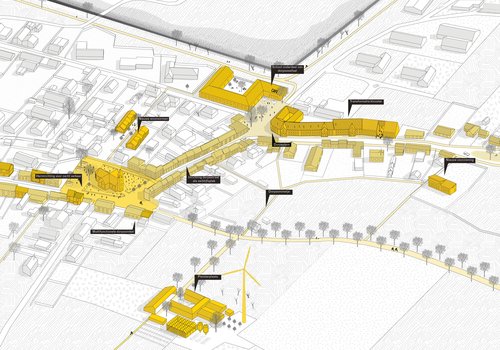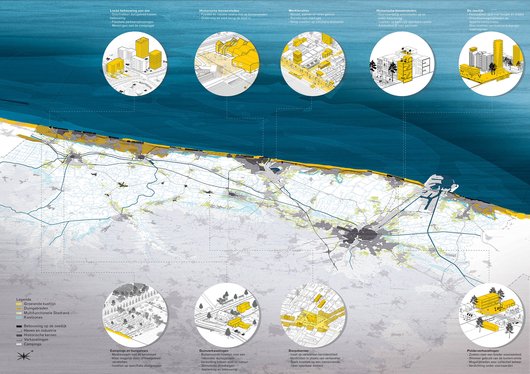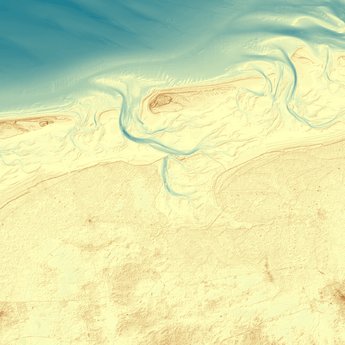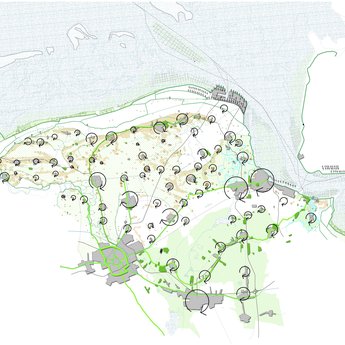Motive
Throughout the ages wind and water have shaped the Flemish coast continuously. The current coast line has been pinned down by rigid urban developments, even though this means that the dynamics of the sea will have an even greater impact on the urban system. In order to develop a contemporary urban system that will benefit both human and natural development, an exploration of a future-proof, embedded and diverse mix of urban, economic and ecologic functions is needed.
Reconversions that make sense
Demographic developments, impacts of climate change and the transition to a circular economy and a sustainable energy supply will affect the coastal zone in the years to come. This research develops and shows several ways in which reconversion can provide an answer to all these changes.
The term coastal urban system is consistently used throughout this project. It implies the importance and impact of the underlying, supporting landscape systems for the built environment of coastal Flanders. This research sketches how major evolutions might affect the urban system and how they might contribute to the reconversion of the physical, ecological, economic and touristic systems of the coast.
